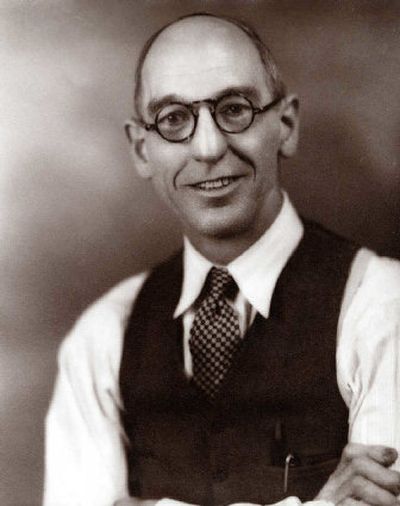Fire destroys part of city’s history

The people who worked at Charles A. Libby & Son photography understood almost from the beginning that their archive was an important link to Spokane’s past.
That’s why Keith Henry, who bought the studio from Charles Libby Jr., was distressed when he learned of a fire at the Northwest Museum of Arts and Culture that destroyed about 700 Libby negatives in its archive.
“Probably the best recording that history can be is a good photograph, and Charlie did take good photographs,” Henry said Thursday in a telephone interview from his home near Ione, Wash.
Museum officials were busy assessing the damage Thursday from the fire that destroyed nitrate-based negatives in a cold storage unit, which housed the images in an attempt to prevent their deterioration and fire. Nitrate-based film was widely used until about 1950. It is highly flammable and can spontaneously combust – something known all to well to photographers of the age.
“We were very aware of the fact that those films were like gunpowder,” said Henry, who owned the Libby studio from 1969 to 1996. Henry sold the images, which date back to 1898, to the museum in 1987.
Fire investigators believe that the cooler where the fire started was functioning properly and maintaining a temperature around 40 degrees when the fire started, said Bruce Eldredge, the museum’s chief operating officer.
“It’s almost unheard of to have a spontaneous combustion fire while in cold storage,” Eldredge said.
Rose Krause, curator of special collections, said that based on logs kept by the Libby studio, she believes the lost negatives were images taken from Dec. 15, 1921, to March 29, 1923. The museum appears to have negative or print copies of 50 percent to 70 percent of the images burned – the rest are gone forever unless someone else has a copy.
Krause said she’s not certain which negatives were destroyed, because officials will not be allowed to access the remaining photos until hazardous-material crews give the OK. The negatives not burned in the cooler, as many as 50,000, were transferred to another cold storage unit by firefighters.
The unburned images were wrapped in plastic, which likely prevented water damage from the sprinkler system. However, museum officials are worried that heat from the fire may have caused them to deteriorate.
“The longer the time goes by, the shorter the time for these negatives,” museum spokeswoman Jennifer Snead said.
The Libby studio took pictures of car crashes, architecture, construction, company picnics and just about anything that documented the life of Spokane. Libby Jr. was an aerial photographer during World War II and often took shots from the wings of airplanes over Spokane. The museum’s Libby collection contains between 100,000 and 150,000 images.
Eldredge said the museum is re-evaluating its storage of the nitrate-based images. Even after copies have been made (about half the collection has been duplicated), the flammable negatives are maintained because copies do not have the same clarity.
Perhaps the biggest reason for keeping the negatives has been cost, Eldredge said. It could take from $300,000 to $1 million to properly copy all the museum’s nitrate negatives.
If the museum did copy them, it probably would duplicate them digitally and on film. Krause said most photo archives have yet to decide if digital reproduction is the truly wave of the future, or at least the kind of future they aim for – perpetuity. “We’re not far enough along digitally to know if that’s a standard for preservation,” Krause said.